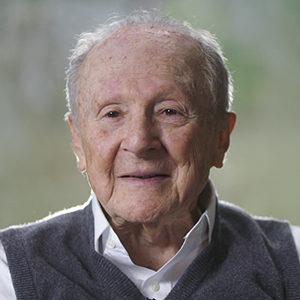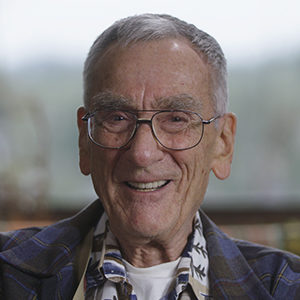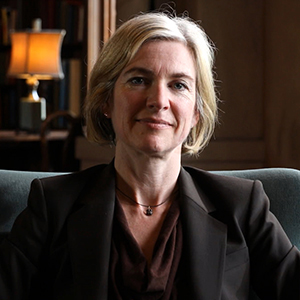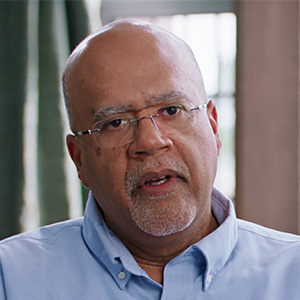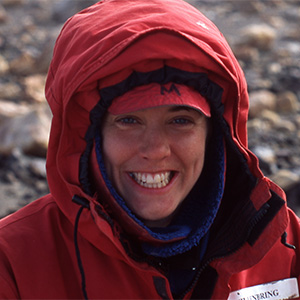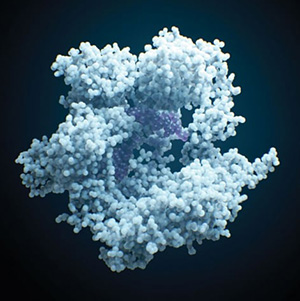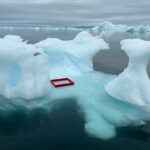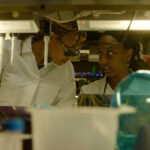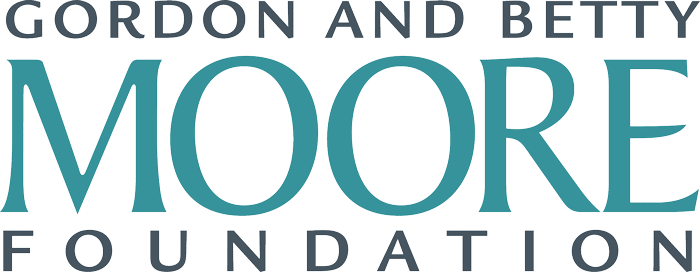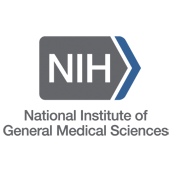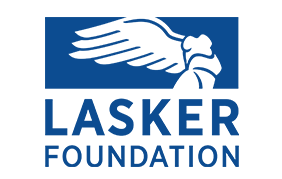Frank Stahl, Ph.D.: John Cairns said on the telephone in a very excited voice, he had just read Mendel’s papers. [Imitating Cairns] “And you know they are the most beautiful experiments in Biology.” And I gasped and I said, “John, John, you can’t say that. You said the Meselson-Stahl experiment was the most beautiful experiment in Biology.” [Imitating Cairns] “Oh, did I? Well, I was wrong.”
Matt Meselson, Ph.D.: Watson and Crick didn’t make a discovery. They proposed a model. There are those who believed this model must be true because it was so beautiful. And there were those who believed it must be wrong because biology is complicated. And this model is too simple to be right. Would you say?
Stahl: Exactly, yes.
Meselson: But there was no experimental proof of it.
Stahl: They had a model which made a distinct prediction about how DNA replicates and it needed to be tested. And it’s fun to test the hypothesis. We agreed that we were going to work together to figure out whether or not it was right.
Meselson: When Frank and I showed semi-conservative replication, it wasn’t just a model, it was something real like that.
Stahl: After our experiment, it was now widely accepted that their model, the Watson-Crick model, is right. So it became the building block. You might say for all of biology.
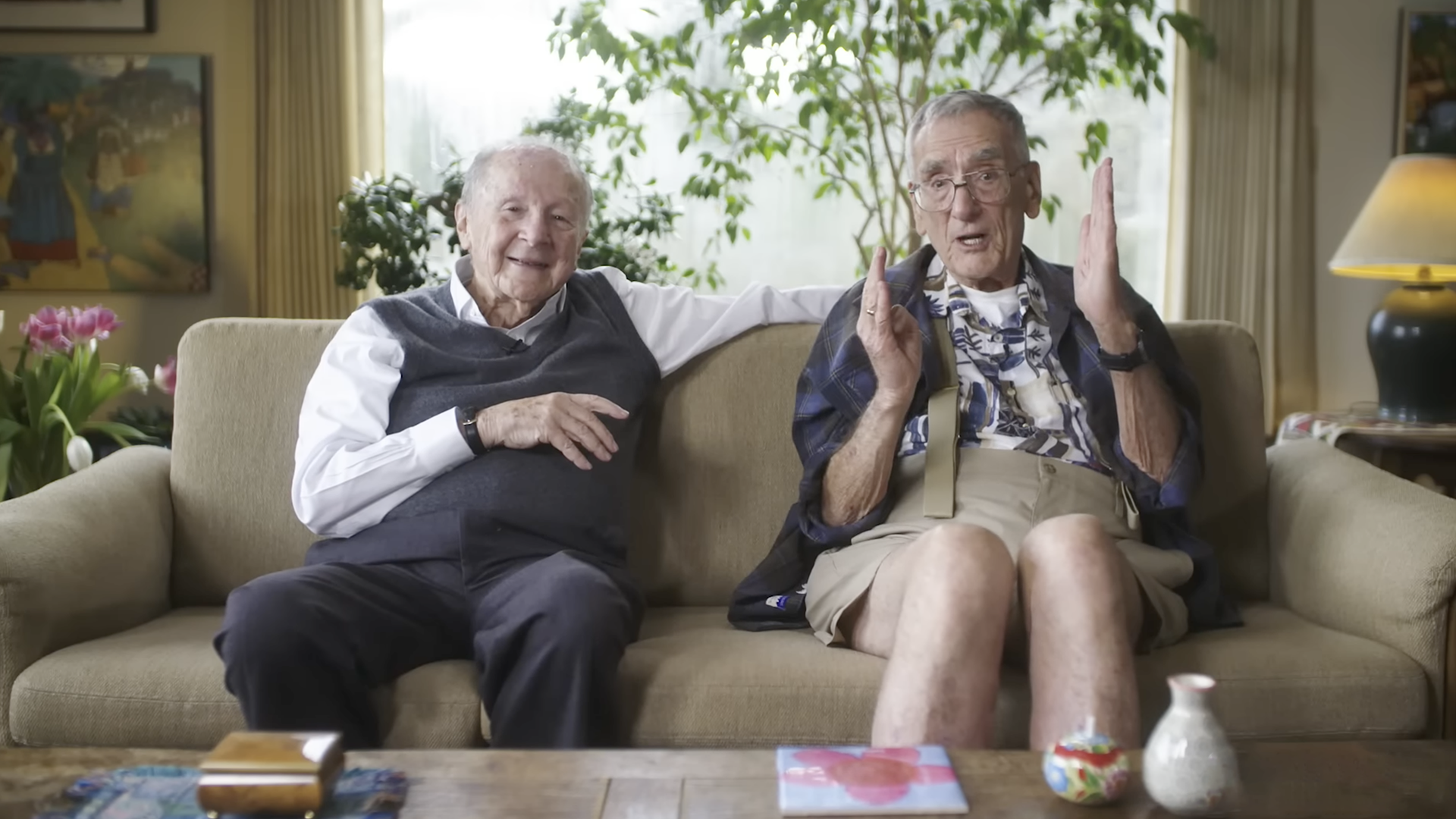
Meselson: Yeah. From very early childhood, I mean, practically infancy, I loved science. I loved to put wires together to make little radios, which I could put under my pillow. So my parents wouldn’t know that I was listening to them all night long. And then I was very interested to know what makes life work. And there had been, I think, in the house, maybe even in my bedroom, that painting by Michelangelo, God up high and Adam below and they’re touching fingers. I don’t know if there is a spark. I don’t think there’s a spark in the picture, but I’m not sure. But to me that meant that life is somehow electrical. God is providing life through a spark. And for some reason that made me interested in electrochemistry.
Stahl: Unlike Matthew, I had no particularly strong interest in science as a youth. What was understood that when I graduated from high school, I would apply to the Naval Academy. That’s what my mother had in mind because she thought I would look good in dress whites. But then of course, World War II broke out. So that plan changed fast and she decided I should just go to college.
I think I was just too young to understand the courses in humanities. I hadn’t had enough life experience to get a grip on the questions they were even thinking about. Science on the other hand was concrete. Children can grasp science and among the sciences, biology was the most appealing. There, the fun was that you could figure out puzzles. That is, there was a rational, concrete, quantitative explanation for what you saw. You could reason backwards as to what must be going on. And that intrigued me enough to know that genetics was something perhaps I could do.
Meselson: I had the great, good luck to become Linus Pauling’s last graduate student. His daughter was having a party at their swimming pool and I’m in the water. And Pauling comes out, the world’s greatest chemist. I’m all naked, practically, in a bathing suit. And he’s all dressed up with a jacket and a vest and a neck tie. And he looked down at me, “Well, Matt, what are you gonna do next year?” And I had already signed up to go to the committee on mathematical biophysics and Linus just looked down at me and he said, “But Matt, that’s a lot of baloney. Come be my graduate student.”
And so if I hadn’t taken his course on the nature of the chemical bond, I would have had a very different life. I wouldn’t have met Frank, I wouldn’t be sitting here, that’s for sure. At the end of my PhD exam, as we were walking out of the little exam room, Linus Pauling turned to me and he said, “Matt, you’re very lucky you’re entering this field just at the right moment.”
Stahl: Yeah.
Meselson: At the very beginning. The first year of my being a graduate student at Caltech, I wanted to get into biology. I was a chemist and I thought the way to do that would be to study molecular structure. The only person who was looking at biology from that point of view, other than Linus Pauling himself, was Max Delbruck. He had a fearsome reputation. Nevertheless, I got up my courage and went to see him. He’s not a fearsome creature at all really. And the first thing he said was, “What do you think about these two papers from Watson and Crick?” I said, I’d never heard of them. I was still in the dark ages, and he yelled at me. He said, “Get out and don’t come back till you’ve read them.”
There were two separate ideas that came together. Crick’s idea about how the base pairs linked onto the chains and Jim’s idea about how the base pairs were structured. So there are four different building blocks in DNA, adenine, thymine, guanine, and cytosine.
Stahl: The surfaces of the G and the C are complementary to each other and of the A and T are complementary to each other so that they can fit together. The way fingers would fit into a glove. And importantly, when they put G opposite C, the distance of the outside was exactly the same as if they’d put A opposite T. No other combination would give such a regular structure. It was a gorgeous insight.
And then from that, they made a hypothesis about how DNA is replicated. It involved the two chains coming apart and each one acting as a template for the synthesis of a new chain on its surface. When it’s all done, here we have the two old chains, each one now associated with a brand new chain.
Meselson: What Watson and Crick proposed was enormous stimulus to experimentation.
Stahl: It was irresistibly beautiful.
Meselson: Irresistibly beautiful. Jim Watson was at Caltech the year after he and Francis published their papers. And so I got a chance to talk a lot with Jim then, and that coming summer he was going to go and teach the physiology course at Woods Hole.
Stahl: I was a graduate student at Rochester at the time. My chairman of the department who was also on my committee, said I had to take a course in physiology. And I said, the physiologist teacher here is a jerk. I’ll be damned if I’ll take his course. Well, send him to Woods Hole to take the physiology course there. And by serendipity, Jim Watson happened to be there with some kid named Meselson hanging along with him. We found that we had in fact deep, common interests.
Meselson: I realized this is a guy who’s really very smart and I can learn a lot from him.
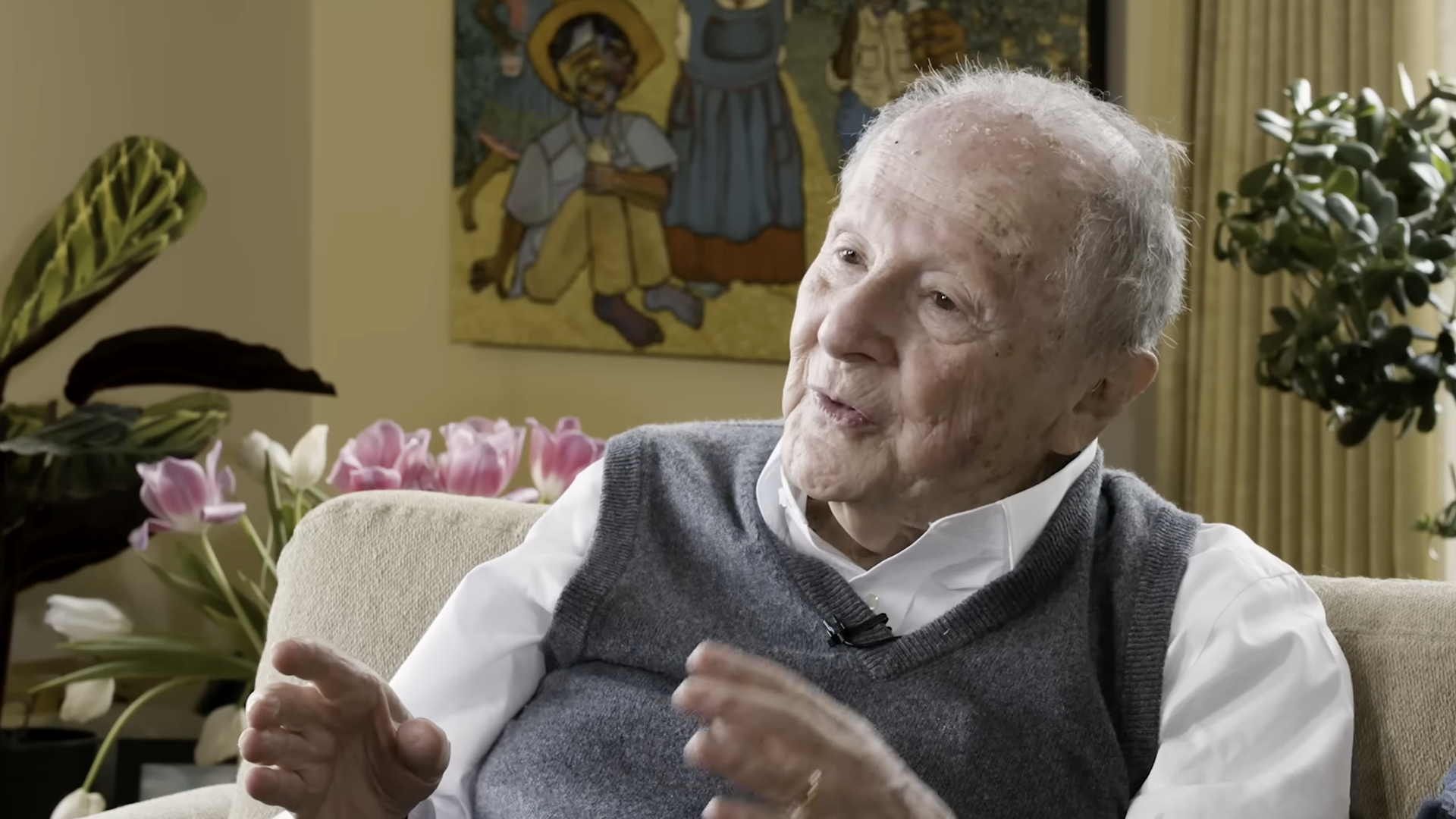
Stahl: I remember a haze of beach parties, lectures that I slept through.
Meselson: Well it was a kind of paradise. The most interesting people in molecular biology. Most of them were there. So that’s how we met. And then it turns out Frank is coming that very September to Caltech.
Stahl: No, it would be a year from then I would come.
Meselson: Are you sure?
Stahl: Yep. I still hadn’t finished my thesis-
Meselson: So I had to wait for a whole year before I saw you again?
Stahl: That’s right. He said, “When you get to Caltech we’ll test Jim’s idea. What do you think about testing Jim’s idea of how DNA replicates?” And then he explained that to me, I’d already heard about it and he explained it to me and I absolutely- I committed, totally.
Meselson: And then when Frank finally got there and I wanted to start right away, he forbade it.
Interviewer: Why?
Meselson: He said it would be bad for my character to not complete my x-ray crystallography before starting something new. This tells you a lot about Frank’s character. With the Watson and Crick model, the underlying question of course was, was that really the right mechanism?
Stahl: The famous Max Delbruck said “No, no, no, no, that model can’t be right.” And he proposed a different model. As Delbruck put it forth, breaks are introduced in the parental molecule as it’s being replicated and then carefully sealed up in certain ways.
Others proposed one in which the original DNA molecule stays intact. And the new DNA molecule is made of all new DNA. So there were three targets out there that in principle could be distinguished, if you could trace the fate of the old chains, what becomes of the two old chains.
Meselson: And one step led to the next, really. I mean, the first idea was using density somehow, which is not a very good idea yet, except it leads you to the next one.
Stahl: Matt’s idea from the very beginning was that somehow stable isotopes could be used that would be incorporated into the DNA and impart upon the DNA, a different density.
Meselson: You grow bacteria in a medium, which instead of having this ordinary isotope of nitrogen, N14, you can buy nitrogen 15 ammonium chloride, the heavy kind. And if you grow the bacteria for a number of generations, you can be sure that essentially all of the DNA is labeled with heavy nitrogen, good. Now, we resuspend those cells in a medium that just has ordinary, nitrogen 14, the light one. And now the question is as the DNA molecules replicate, how will the heavy nitrogen from those parent molecules be distributed amongst the daughter molecules that are produced in successive duplications?
Stahl: Then some sensitive method for separating DNA, according to its density would be devised.
Meselson: I ran across an article about the centrifugation of cesium chloride solution to measure the molecular weight.
Stahl: If the DNA was in there with the cesium, it would find its position in the density gradient. If it was heavy DNA, it would tend to be down near the bottom of the tube where the cesium was concentrated and the density was high. If the DNA was light DNA, made of light isotopes, it would be higher up in the tube. You could think about it this way. If you jumped into the Great Salt Lake, as we all know you float, you go right to the top because you are less dense than the water. But if you have a bathing suit with pockets in it, and you stuffed some lead weights in your pockets, you’ll sink down. Cause you’re more dense than the water.
Now imagine that the salt in the Great Salt Lake is not uniformly distributed, but is concentrated near the bottom and rather less concentrated near the top. Now, if you put just the right number of heavy weights in your pocket, you won’t float because you’ll be too dense. You won’t float at the top and you won’t go all the way to the bottom because you’re not dense enough. You’ll instead come to rest somewhere, halfway between the top and the bottom, you will have found your place in that gradient. And that’s the very basis by which the experiment finally worked and worked so beautifully.
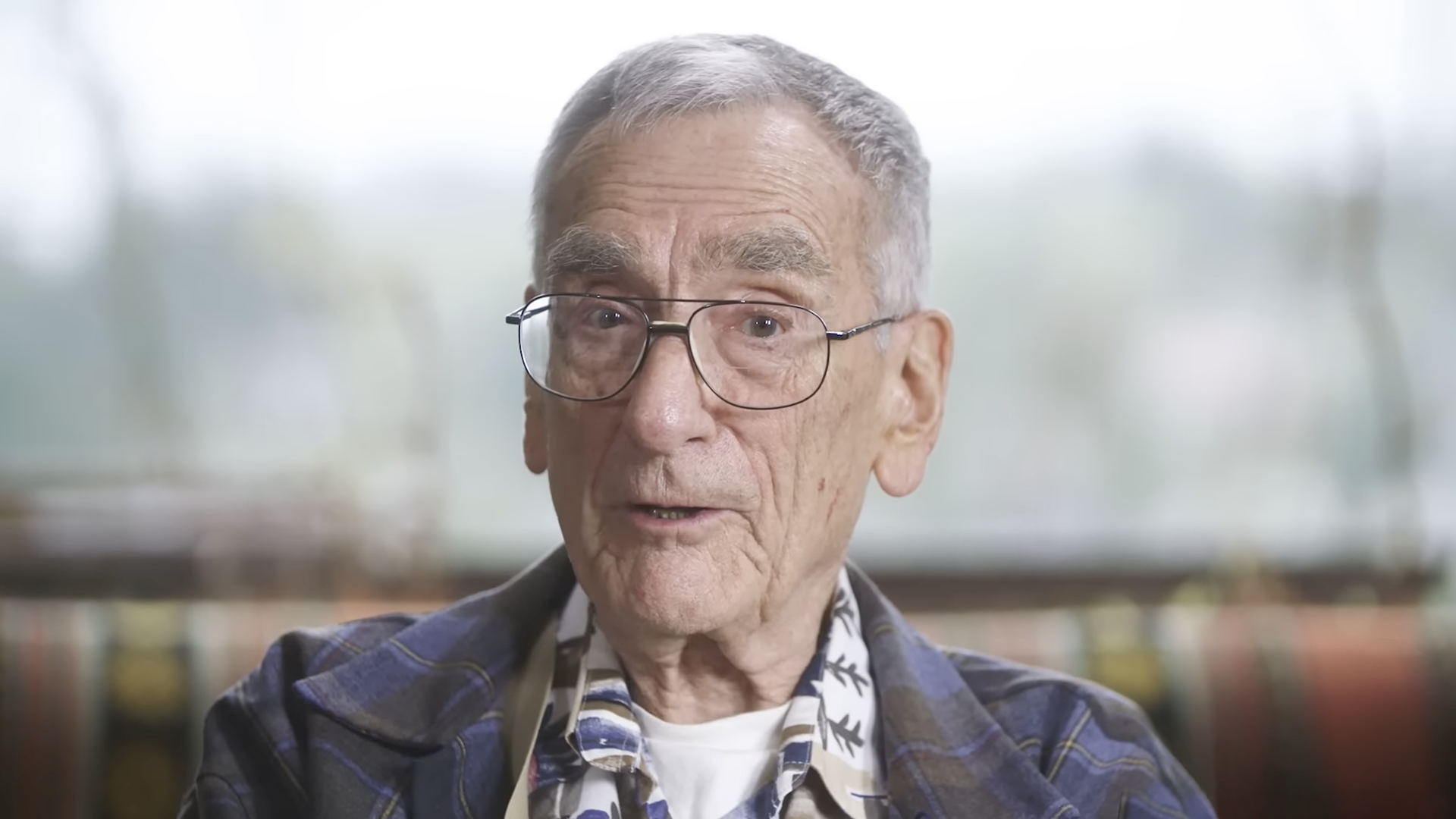
Meselson: And then it was just a question of looking in the centrifuge while it’s running. And when it reaches equilibrium to see where the heavy and light DNA are.
Stahl: All the makings were there, then to do the experiment itself, it was obvious that the experiment was going to give an answer.
Meselson: Driving it all was the fact that Frank wanted to know how life works.
Stahl: Yeah, yeah. I don’t know that drove it all but-
Meselson: Each person is trying to come up with something as a gift to the other guy.
Stahl: That’s true.
Meselson: I think.
Stahl: That’s true.
Meselson: So it becomes a very connected relationship because the next day you want to have something to offer.
Stahl: Matt was ready to step out into an area, pretty heavily uncharted, to answer an important question. And the pieces had to be built as he went along.
Meselson: The prediction of the Watson and Crick model, was the two parent chains come apart. Each one makes a new daughter molecule and that’s replication. So that would predict that after exactly one generation, when everything has doubled in the bacterial culture, that you’d find the DNA molecules all have one old strand, which is labeled heavy. And one new strand, which is labeled light and therefore their density should be halfway between fully heavy and fully light, that would be the prediction for what you see at exactly one generation.
Stahl: What do you predict to see for the next generation? Well, each molecule would, again, separate its chains. One of which is heavy. The other of which is light and the only growth medium available is light growth medium. Then the light chain would make another light chain to go with it, a complement. The heavy chain would make another, a light chain to go with it. So after two generations you have DNA, half of which is half heavy. And the other half of which is all light. And fantastically, that’s exactly the result that one could see.
In order to say that the Watson-Crick model fits the data very well, but the other two models do not, we have to see what they’d predict. Start with the Dispersive Model. After one generation, the two molecules resulting would indeed be half heavy, but in the next generation, there would be a subsequent dispersion of the label. So you’d be getting molecules that were three quarters light, and one quarter heavy. And in each generation, the molecules would get lighter and lighter.
The fully Conservative Model simply imagined that duplex DNA fully heavy now, somehow created the appearance of a fully light duplex molecule in which both chains are made of light DNA. Most of the times when you get an experimental result, it doesn’t speak to you with such clarity. These pictures of the DNA bands interpreted themselves.
Meselson: It felt like a…supernatural. It felt like you were in touch with the gods or something like that.
Stahl: I remember I presented this result that summer early in the summer in France at a phage meeting, complete with the photographs of the density gradient bandings. And at the end of it, I stopped and there was total silence and somebody said, “Well, that’s it.”
Meselson: The intellectual freedom at Caltech. We could do whatever we wanted. It was very unusual for such young guys to do such an important experiment. So suddenly, whereas before that, like Max would be talking with Sinsheimer about the genetic code. And before we did our experiment, I was definitely not – at least I felt I wasn’t – supposed to be at those discussions. But afterwards, I could be a full member.
We had this wonderful house, big house across the street from the lab. And our roommates, we all, we talked about these experiments at almost every dinner. So we had this wonderful intellectual atmosphere, John Drake, Howard Temin. Why are you frowning?
Stahl: He told the dirtiest jokes I’ve ever heard.
Meselson: No that was Roger Milkman.
Stahl: Well you’re right, they held positions one and two.
Meselson: That’s true, that’s true, that’s true. So it was a very lively, intense, friendly atmosphere.
Stahl: It was lively enough and conveniently located enough that over time we had visits from William O. Douglas,
Meselson: Judge Douglas.
Stahl: Judge Douglas of the Supreme Court.
Meselson: And here Dick Feynman, probably one of the world’s greatest physicists at that time, or maybe ever, palled around with us. He came over to our big house and played his drums, sat down on the floor, played the drums. I’m just a graduate student and he’s the world’s greatest physicist, but that’s what it was like. It was a very friendly wide open place. Frank and I are very lucky.
The way I think of it is that there’s a river, which is a period of time when the fundamental things, the structure of DNA, how replication happens, the genetic code. And then, when these problems are solved. There are lots of little rivulets. The river divides into thousands of branches using these fundamental insights into how life works and applying them to specific questions, questions of disease, etc. So to me, with some exceptions, this was a really interesting time when it was still a big river.
Stahl: Also, now you can cut this out, but also the Meselsons, Matt’s parents, were kind enough to keep the liquor cabinet fully stocked at all times.
Stahl: My throat is a little bit?
Meselson: I have a cough drop.
Stahl: I don’t want a cough drop. I want a non-alcoholic beer. No, no, no.
Meselson: I require a margarita. I’ve worked for the CIA. I vaporized many people, including many of your friends, Big black beard, and blew out some of his pipe smoke and still holding his pipe stem in his teeth said, “Oh Matt, history is just what people think it was.”
Meselson M. and Stahl F. The replication of DNA in Escherichia coli. PNAS July 15, 1958 44 (7) 671-682.
See the Explorer’s Guide to Biology for a first-person and in-depth description of Meselson and Stahl’s studies, as well as educational resources associated with their foundational key experiment. Teaching resources from XBio: How DNA Replicates
Sarah Goodwin (Wonder Collaborative): Executive Producer
Elliot Kirschner (Wonder Collaborative): Executive Producer
Shannon Behrman (iBiology): Executive Producer
Brittany Anderton (iBiology): Producer
Derek Reich (ZooPrax Productions): Videographer
Eric Kornblum (iBiology): Videographer
Rebecca Ellsworth (The Edit Center): Editor
Adam Bolt (The Edit Center): Editor
Gb Kim (Explorer’s Guide to Biology): Illustrations
Chris George: Design and Graphics
Maggie Hubbard: Design and Graphics
Marcus Bagala: Original music
Samuel Bagala: Original music
